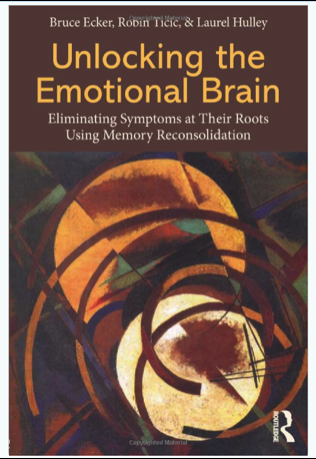A one shot learning experience such as a trauma can be emotionally impactful enough to negatively affect a person for life. And not only was the trauma a problem when it was first occurring, but it can also later result in future psychological disorders such as phobias, PTSD, panic disorder, depression, addictions and/or obsessive compulsive disorder. (1)
Can PTSD Be Cured?
This is why the medical community is continually researching ways that helps people overcome or change memories formed from the aftermath of a past event. By changing the memory, it can help in healing trauma and to eliminate or reduce it's potentially problematic offshoots. And this idea is not new, the clinical appeal of having the capability to remove or inhibit unwanted memories has long been appreciated;
Here, Shakespeare’s Macbeth implores the Doctor to treat his murderous guilty wife:
Canst thou not minister to a mind diseased,
Pluck from the memory a rooted sorrow,
Raze out the written troubles of the brain,
And with some sweet oblivious antidote
Cleanse the stuff’d bosom of that perilous stuff
Which weighs upon the heart?
How to Change Traumatic Memories
There are two ways to change memories.
The inside way (endogenous) and the outside way (exogenous).
The exogenous methods includes medicine and magnets.
Let's look at these exogenous methods first.
Transcranial Direct Stimulation
This modality is frequently used to help people change past memories. The way it works is by turning on and off a magnetic coil that is placed over the clients skull. With the magnet in place, the patient is asked to recall the problem memory and in doing so the clinician turns on the magnet with the purpose of changing the blood flow in the brain that would normally trigger the fight/flight response.
According to John Hopkins medicine, 'although tDCS is still an experimental form of brain stimulation, it potentially has several advantages over other brain stimulation techniques. It is cheap, non-invasive, painless and safe. It is also easy to administer and the equipment is easily portable. The most common side effect of tDCS is a slight itching or tingling on the scalp.' -https://www.hopkinsmedicine.org/psychiatry/specialty_areas/brain_stimulation/tdcs.html
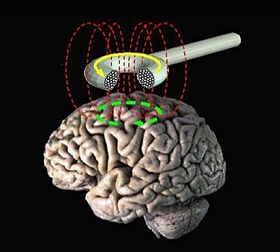 When a person calls forth a PTSD memory, there is additional blood flow engagement in the right frontal, limbic and paralimbic areas of the brain, particularly when they are recalling the traumatic event associated with their symptoms.
When a person calls forth a PTSD memory, there is additional blood flow engagement in the right frontal, limbic and paralimbic areas of the brain, particularly when they are recalling the traumatic event associated with their symptoms.
Cost:
$350 USD per treatment and totals between $6,000 to $12,000 US dollars depending on the number of treatments.
Propanolol
Propanolol is frequently prescribed as a heart medication and for treating anxiety and hypertension, but it is also shown to disrupt the amygdala’s modulation of hippocampal-dependent consolidation of episodic memory in both humans and other animals. Propanolol works by blocking protein synthesis, a process needed to stabilize and encode a memory. 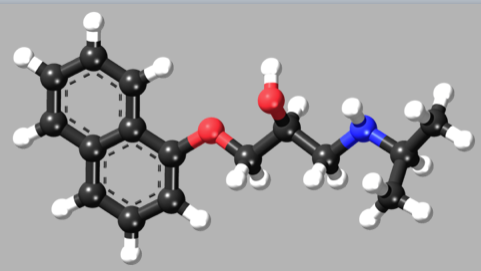 When this process is disrupted during the creation of the traumatic memory, it causes a reduction in it's emotional aspects.
When this process is disrupted during the creation of the traumatic memory, it causes a reduction in it's emotional aspects.
For example, in an attempt to dampen the consolidation of memories for stressful events, propanolol has been administered in the emergency room following traumatic experiences. Individuals randomized to propranolol treatment 6 hr or less after a traumatic event were less likely to develop PTSD symptoms than those randomized to placebo treatment. When exposed to reminders of the traumatic event 3 months later, propranolol-treated subjects showed less physiological responsivity than placebo-treated individuals (2), (3), (4).
Propofol
If this sounds familiar, it's likely because you've heard it as the cause of death for the pop star Michael Jackson. This drug is a sedative and can be lethal if administered incorrectly. 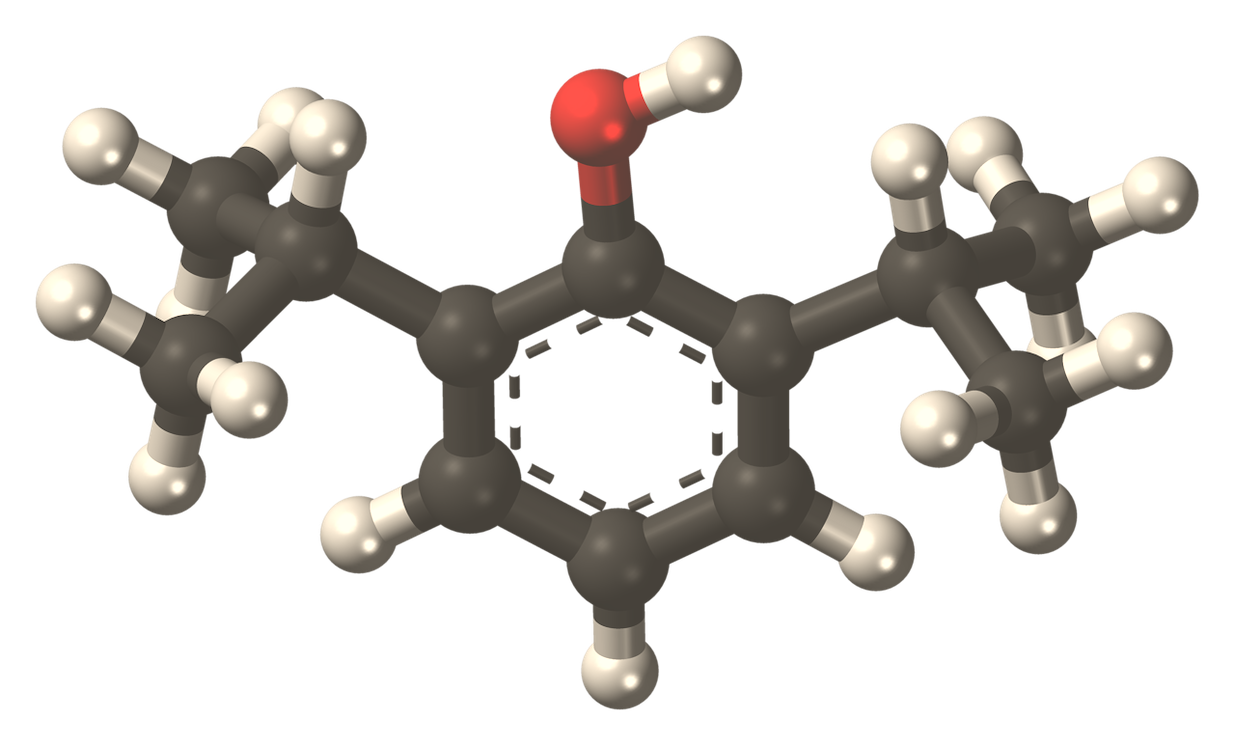 However, it does have some utility. 'One dose of propofol following memory reactivation selectively impairs subsequent emotional episodic memory retrieval in a time-dependent manner, consistent with reconsolidation impairment.' (5) If you were going to change a traumatic memory with propofol it would be administered intravenously and then you'd be asked to recall the traumatic event. The next day the memory would be considerably modified. Propofol only abolishes implicit memory during deep sedation. Due to the sensitivity of this drug and it's potential danger, this is may not be the best option.
However, it does have some utility. 'One dose of propofol following memory reactivation selectively impairs subsequent emotional episodic memory retrieval in a time-dependent manner, consistent with reconsolidation impairment.' (5) If you were going to change a traumatic memory with propofol it would be administered intravenously and then you'd be asked to recall the traumatic event. The next day the memory would be considerably modified. Propofol only abolishes implicit memory during deep sedation. Due to the sensitivity of this drug and it's potential danger, this is may not be the best option.
Metyrapone
Recalling painful memories while under the influence of the drug metyrapone reduces the brain’s ability to re-record the negative emotions associated with them, according to University of Montreal researchers at the Centre for Studies on Human Stress of Louis-H. Lafontaine Hospital.  Metyrapone works by manipulating cortisol (stress hormone) close to the time of forming new memories which decreases the negative emotions that would otherwise been associated with them.
Metyrapone works by manipulating cortisol (stress hormone) close to the time of forming new memories which decreases the negative emotions that would otherwise been associated with them.
For example, a study was done on 33 men diagnosed with PTSD. This research involved these individuals learning a story composed of neutral and negative events. Three days later, they were divided into three groups – participants in the first group received a single dose of metyrapone, the second received double, while the third were given placebo. They were then asked to remember the story. Their memory performance was then evaluated again four days later, once the drug had cleared out. “We found that the men in the group who received two doses of metyrapone were impaired when retrieving the negative events of the story, while they showed no impairment recalling the neutral parts of the story,” Marin explained. “We were surprised that the decreased memory of negative information was still present once cortisol levels had returned to normal.” (6)
What about the natural processes in the brain to help ease the burden of traumatic memories?
For endogenous memory change, one of the more popular common forms is through extinction training.
Extinction Training
This modality is also known as exposure therapy. Fear extinction is a paradigm in which a conditioned stimulus (CS) is repeatedly presented in the absence of the unconditioned stimulus (US) and leads to a progressive reduction in the expression of fear. For example, if a child heard ambulance sirens while witnessing a horrific event at school, the child may also end up hearing similar sounds at a shopping mall or restaurant and this reminder can trigger the fear/flight/fight response. With extinction or exposure therapy, the therapist would have the child learn better responses to these acoustic triggers as a means of competing against the problem memory. After several weeks/months/years of this type of systematic desensitization, the potency of that traumatic memory and associations to that trigger sound can gradually extinguish.
The problem with extinction/exposure is that it merely suppresses but does not erase the target learning. Several months of exposure therapy progress can be wiped out under some circumstances because aversive events can trigger relapse of extinguished fear memories, presenting a major challenge to the long-term efficacy of therapeutic interventions.
Here is where extinction fails: Specifically, the reemergence of a previously extinguished fear is well known to occur, in rodents and humans alike, under three general conditions:
A) Renewal, i.e.
when the conditioned stimulus is presented outside of the context of extinction.
B) Reinstatement,
i.e. when the original unconditioned stimulus is presented unexpectedly as a surprise
C) Spontaneous recovery, i.e. the original fear condition returns after a substantial amount of time has elapsed.
Why do therapists use this form of therapy when it clearly has it's challenges?
The simple answer is based on the understanding of memory, which is that memories can't be changed only challenged, so this is, or so it seems, all there is.
However, a major shift occurred in December 2009 regarding the understanding of memory when research had shown to seemingly violate a first order principle. It was understood that once a memory's consolidation is complete, that the memory will remain in the consolidated state-that is, fixed and stable. But all that changed with a landmark study (7) by Elizabeth Phelps, Joseph LeDoux and Danielle Schiller et al which showed that memories are not permanently stable, but that they can be temporarily made labile, that is, open for modification.
This leads us to the last and best way to endogenously change a traumatic memory.
Memory Reconsolidation
Memories can be made temporarily modifiable. This phenomenon has been found in bees, snails, crabs, rats, chickens, medaka fish, mammals and humans. (8) 'As learning and memory mechanisms, reconsolidation is conceptualized as re-learning that results in new/updated memories whereas extinction is a process that involves blocking the original old memories.' (8a) 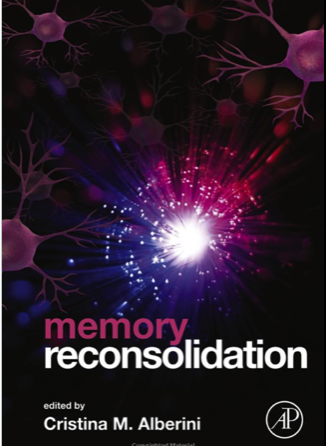
The therapeutic benefit of this discovery is that it means interventions can be made that are based on the brains natural innate process for reconsolidating memories. This would cause the traumatic memory to remain, while drastically reducing it's deleterious consequences and PTSD symptoms such as nightmares, flashbacks, increased arousal such as difficulty sleeping and concentrating, feeling jumpy, and being easily irritated and angered.
What is great about this discovery of naturally modifying a traumatic memory is that it finally explains how a decades old technique found in NLP for quickly removing phobias and curing PTSD actually works.
In 1985, Richard Bandler, the co-founder of NLP (Neurolinguistic Programming) wrote a book called 'Using Your Brain for a Change' which outlined a step by step strategy for curing phobias and traumatic memories. The strategy (rewind technique, VK/D Protocol, RTM Protocol) had been used successfully for decades but it was largely brushed aside since it seemed to contradict what was scientifically understood about old consolidated memories. Now that technology has advanced, there have been great strides in learning how the brain and memory works, so much so that the definitions of memory formation in biology had to be changed and updated to reflect the discovery of memory reconsolidation. Since this strategy has been tested in light of this new understanding of memory, it has become more integrated into therapeutic practices.
The way this memory reconsolidation strategy begins is by briefly (under ten minutes) accessing the traumatic memory. From there the client is guided to disrupt that memory with several steps that dissociates the experiences and gives the client an opportunity to modify the memory without feeling the usual states of arousal. Once the steps are done, the memory later reconsolidates with this new safety information in it. Then in the future when the problem memory is retrieved, it is this newly updated safe version of the memory that becomes the new default. So if you had a traumatic memory or phobia that you wanted changed for good, you can see an experienced NLP practitioner (hey, that's me!) to guide you through the reconsolidation intervention.
In a pilot study on the reconsolidation of traumatic memories (RTM) protocol, 30 men who had been diagnosed with PTSD were to go through the program. Of the 30, 26 completed it. Of the 26, 25 no longer had PTSD. That's a 96% cure rate using a non-drug intervention. (9) You might want to watch this video of Dr Frank Bourke, former Army Commander Jerry Orser and Senator Bonacic share more detailed testimonials about these results.
One of the major benefits of these successful studies is that it helps people that have had PTSD for decades to use an intervention that is fast and long lasting.
More recently, the reconsolidation of traumatic memories protocol was taught to 30 social workers and used in Parkland Florida to successfully help students with PTSD from the horrific shooting that occurred Feb 14, 2018. (10)
So there are ways to change traumatic memories using pharmaceuticals, magnets and natural innate processes. If you're thinking of what might be best for you, this quote might be of help. "Perhaps in part due to the difficulty of pharmacological interventions in humans, there has been relatively more success altering reconsolidation through behavioural interference." (11)
For more information on healing trauma, you might want to checkout this summit of 20 experts on the topic that gathered for the purpose of sharing their insights on the topic. https://reprogrammingmind.com/Healing-Trauma-Summit.html
Also, Linda Graham, author of Bouncing Back: Rewiring Your Brain for Maximum Resilience, has an online course course called Neuroscience for Psychotherapists where she teaches memory deconsolidation-reconsolidation techniques to rewire traumatic memories in greater detail.
References
1. Gershuny, B. S., Baer, L., Parker, H., Gentes, E. L., Infield, A. L., & Jenike, M. A. (2008). Trauma and posttraumatic stress disorder in treatment-resistant obsessive compulsive disorder. Depression and Anxiety, 25(1), 69e71. http://dx.doi.org/10. 1002/da.20284.
2. Pitman, R. K., Sanders, K. M., Zusman, R. M., Healy, A. R., Cheema, F., Lasko, N. B., & Orr, S. P. (2002). Pilot study of secondary prevention of posttraumatic stress disorder with propranolol. Biological Psychiatry, 51(2), 189e192.
3. Heim, C., & Nemeroff, C. B. (2001). The role of childhood trauma in the neurobiology of mood and anxiety disorders: Preclinical and clinical studies. Biological Psychiatry, 49(12), 1023e1039.
4. Spinhoven, P., Elzinga, B. M., Hovens, J. G., Roelofs, K., Zitman, F. G., van Oppen, P., & Penninx, B. W. (2010). The specificity of childhood adversities and negative life events across the life span to anxiety and depressive disorders. Journal of Affective Disorders, 126(1-2), 103e112. http://dx.doi.org/10.1016/j.jad.2010. 02.132.
5. Propofol-induced deep sedation reduces emotional episodic memory reconsolidation in humans. Ana Galarza Vallejo, Marijn C. W. Kroes, Enrique Rey, Maria Victoria Acedo, Stephan Moratti, Guillén Fernández.
https://advances.sciencemag.org/content/5/3/eaav3801
6. Marie-France Marin Almut Hupbach Françoise S. Maheu, Karim Nader, Sonia J. Lupien.
Metyrapone Administration Reduces the Strength of an Emotional Memory Trace in a Long-Lasting Manner. https://academic.oup.com/jcem/article/96/8/E1221/2833629
7. Preventing the return of fear in humans using reconsolidation update mechanisms
Daniela Schiller, Marie-H. Monfils, Candace M. Raio, David C. Johnson, Joseph E. LeDoux and Elizabeth A. Phelps
8. Anokhin, K. V., Tiunova, A. A., & Rose, S. P. R. (2002). Reminder effects Reconsolidation or retrieval deficit? Pharmacological dissection with protein synthesis inhibitors following reminder for a passive-avoidance task in young chicks. European Journal of Neuroscience, 15, 1759e1765.
Eisenberg, M., Kobilo, T., Berman, D. E., & Dudai, Y. (2003). Stability of retrieved memory: inverse correlation with trace dominance. Science, 301, 1102e1104.
Pedreira, M. E., Perez-Cuesta, L. M., & Maldonado, H. (2002). Reactivation and reconsolidation of long-term memory in the crab Chasmagnathus: protein synthesis requirement and mediation by NMDA-type glutamatergic receptors. Journal of Neuroscience, 22, 8305e8311
Rose, J. K., & Rankin, C. H. (2006). Blocking memory reconsolidation reverses memory- associated changes in glutamate receptor expression. Journal of Neuroscience, 8, 11582e11587
Sangha, S., Scheibenstock, A., & Lukowiak, K. (2003a). Reconsolidation of a long-term memory in Lymnaea requires new protein and RNA synthesis and the soma of right pedal dorsal 1. Journal of Neuroscience, 23, 8034e8040.
Sangha, S., Scheibenstock, A., Morrow, R., & Lukowiak, K. (2003b). Extinction requires new RNA and protein synthesis and the soma of the cell right pedal dorsal 1 in Lymnaea stagnalis. Journal of Neuroscience, 23, 9842e9851.
Walker, M. P., Brakefield, T., Hobson, J. A., & Stickgold, R. (2003). Dissociable stages of human memory consolidation and reconsolidation. Nature, 425, 616e62
8a. Monfils, M. H., Cowansage, K. K., Klann, E., & LeDoux, J. E. (2009). Extinction-reconsolidation boundaries: Key to persistent attenuation of fear memories. Science, 324, 951-955. https://www.ncbi.nlm.nih.gov/pmc/articles/PMC3640262/
9. Bourke, F., Gray, R. Remediation of intrusive symptoms of PTSD in fewer than five sessions.
A 30-person pre-pilot study of the RTM_Protocol. https://www.researchgate.net/publication/282120199_Remediation_of_intrusive_symptoms_of_PTSD_in_fewer_than_five_sessions_A_30-person_pre-pilot_study_of_the_RTM_Protocol
10. https://www.local10.com/news/parkland-school-shooting/community-meeting-offers-hope-for-parkland-shooting-survivors
11. Memory Reconsolidation by Cristina Alberini. Chapter 9.- Pg 205, Behavioral Interference of Reconsolidation by Daniela Schiller and Elizabeth Phelps.
The book 'Memory Reconsolidation' by Cristina Alberini is more of a scientific textbook that is the best on memory reconsolidation. It's not a light read but if you're into this topic, it's a must have that you'll frequently reference.
The book 'Unlocking the Emotional Brain - Eliminating Symptoms at Their Roots Using Memory Reconsolidation by Bruce Ecker, Robin Ticic and Laurel Hulley' is a very user friendly read and provides many real life examples and applications on how to use therapeutic applications of the brain's innate process for updating memories.
We are a participant in the Amazon Services LLC Associates Program, an affiliate advertising program designed to provide a means for us to earn fees by linking to Amazon.com and affiliated sites.

